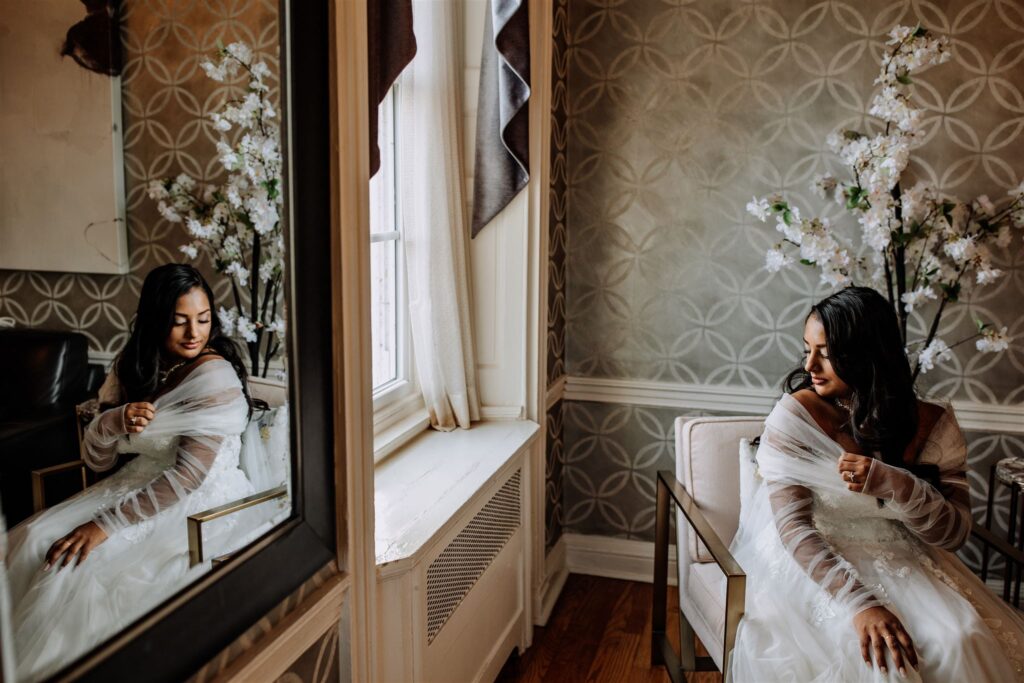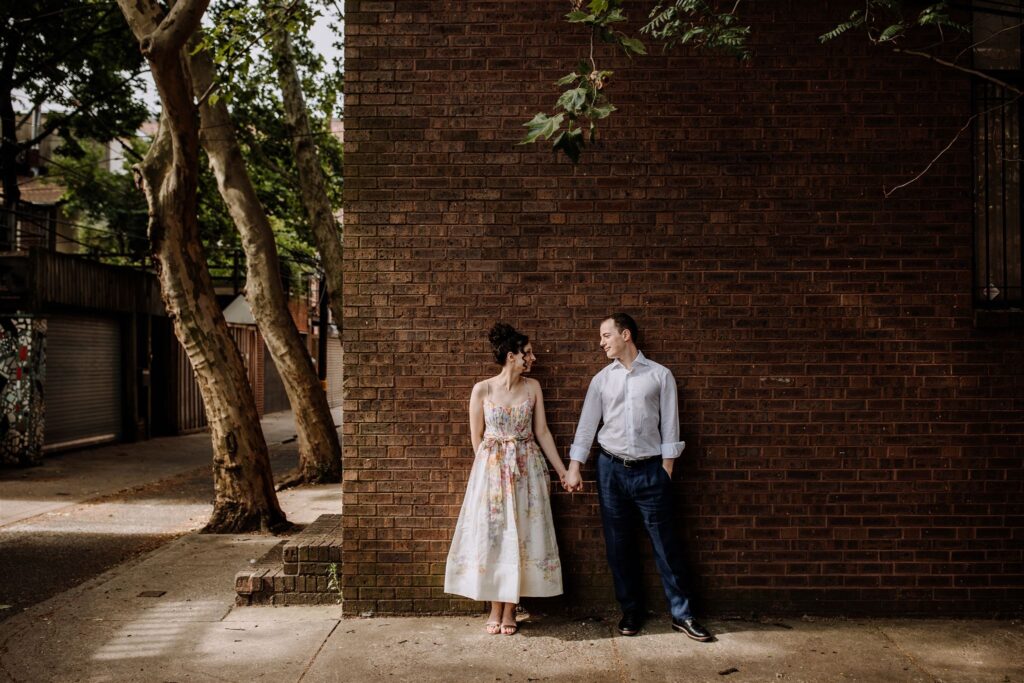We're a team of wedding, elopement and portrait photographers who put community over competition. We provide tips and resources for Photographers looking to up-level their businesses.
We're here to help When you join The Photography Business Academy
How to Set the Right Price for Your Photography Services
What’s the right price point for your photography services?
It’s one of the most common questions photographers ask—whether they’re just starting out or have been in the industry for years but still lack confidence in their pricing.
Let’s face it head on…pricing can be tricky.
It’s not just about picking a number and hoping for the best.
It’s about understanding the value you provide, what you need to make to sustain your business, getting really clear on what you are actually selling and your “offer”, and how to balance those factors with your market and goals. There’s definitely a lot to consider!
In this post, we’ll break down how you can approach pricing in a way that builds your confidence and ensures you’re meeting your financial needs. We’ll also direct you to tools to help get better pricing in place for your business.

The Importance of Pricing with Confidence
Before we can really talk heavily about pricing itself, we need to step back and think about what happens when we have good pricing in place.
In simple terms: we get more confidence.
More confidence enables us to perform better in everything we’re doing for our business – we often will attract more leads, book more clients, you name it as a result…
As a photography business owner, you have the right to set your prices based on demand and your financial needs.
If you’re getting a lot of inquiries, that’s a good sign that your services are in demand, and it may justify increasing your prices.
But…pricing isn’t just about demand.
It’s also about making sure you’re bringing home enough to not just survive, but thrive.
Ideally, your prices should allow you to meet your basic financial needs, save for the future, and enjoy your life outside of work.
After all, the goal is to run a business that supports your life—not one that drains you.
So…how do we get more confident in our prices?
We need to be able to set prices that simply make sense, and fortunately we can look at some objective measures to help us.
Understanding the Pricing Spectrum in the Photography Industry
Photographers across the world charge vastly different amounts for their services.
I think we all know this (but sometimes don’t want to actually admit it).
You’ll find everything from beginners offering free shoots or $100 sessions, to established pros charging $3,000-$5,000 for weddings, all the way up to luxury photographers who charge tens of thousands of dollars for high-end events.
Last I heard, high end celebrity photographer Jose Villa starts around $50,000 for weddings. Crazy, huh?!
The question is: what’s the right price for you?
There’s no one-size-fits-all answer.
Sorry to be lame with the answer/non-answer, but I’m going to elaborate more to help you find what works for you and your business.
At the surface level – your pricing should be influenced by several key factors, including the value of your services, your cost of doing business, your business goals, your demand, and your competition. Let’s talk about those things now!

5 Key Factors That Influence Your Price Point
1. Perceived Value
The value of your photography is not just about the final product—it’s about how you’re presenting your brand, your client experience, and how you’re showcasing your work.
Ask yourself: would you hire you?
The more value your services appear to have in the eyes of your clients, the more you can charge.
Perceived “value” can often be hard to get clear on.
Some of your assessment requires a level of gut intuition.
But, there are also real, hard, and objective facts you can look at to help you determine how valuable your photography service is – things like how much traffic are you attracting to your website, how many leads are you getting, are you getting sales?
By being able to see real “demand” for what you have to offer, you are more valuable.
2. Cost of Doing Business (CODB)
At a minimum, your pricing needs to cover your cost of doing business.
This includes the following:
- your personal salary
- business overhead costs
- and taxes
If you’re charging less than what you need to operate, you’re putting your business at risk!
We cover finding your CODB and using it to help inform good pricing for your photography services in our Finance Course for Photographers.
3. Business Goals
Some photographers want to charge higher rates and take on fewer, higher-quality clients.
Others prefer to keep prices more accessible to attract a higher volume of clients.
Both approaches are valid, but knowing which one fits your goals is crucial for setting prices that work for you.
As a reality check for some photographers looking to charge more or even operate in the “luxury” price range – there is often a lot required in order to move up into higher and higher price brackets. Rarely is it as simple as just increasing your prices without doing much more to improve things like your brand, market messaging, work quality and what is being showcased, etc. It’s absolutely achievable, but it does take time in most cases to get premium prices to stick while getting the bookings you need.
4. Brand and Experience
Clients aren’t just paying for photos—they’re paying for the experience of working with you.
This is actually a sentiment that gets said a lot in the photography industry – “they’re paying for the experience!” – but often it’s something that gets tossed around without supporting what exactly that experience is and means.
The experience that is truly being paid for isn’t just you showing up, or you offering a good customer service experience (ie: being nice during a photo shoot).
Instead, this “experience” needs to be something much deeper in order to be compelling and motivating for people to want to buy from you.
As a start – if your branding, client experience, website and social proof are strong, clients will be more willing to pay higher prices.
5. Competition
While you shouldn’t base your prices solely on what others are charging (and we’d never suggest that), it’s important to know where you stand relative to your competitors.
And before we continue this conversation, let’s also be clear – we are big advocates for community over competition and putting that sentiment into practice. In fact, it’s a big thing that motivated Marshall and I to connect in the first place (you can learn more about us here).
But, the fact of the matter is that if you are a photographer in business, you are competing with other photographers for opportunities.
If you’re priced higher, make sure you’re offering something unique that justifies that difference.
If you’re priced lower, it could be a sign that it’s time to raise your rates.
Clients have options when it comes to photographers, and the vast, vast majority of them will explore those options before committing to even reach out to you, much less set up a free consult call or book with you.
If they are able to easily compare you with someone else (very similar portfolios, for example), price becomes more of a motivating factor.
Establishing a unique brand both on the inside-and-outside is one of the key ways to differentiate yourself from your competition and make pricing concerns a thing of the past.
Want help with your branding? Our Branding for Photographers course helps you get clear on what your brand is so you can more effectively market and sell yourself.

Finding Your Pricing Sweet Spot
Your ideal price point is a balance between what people are willing to pay and what you need to charge to meet your financial goals.
To do this, you’ll want to consider:
- The value you offer to clients
- The cost of doing business
- Your short-term and long-term goals for your business
Ultimately, your pricing is part of your overall business strategy.
It signals your value and sets expectations for the type of experience clients can expect when they work with you.
Keep in mind, price is not the only thing your clients are considering when they are deciding whether to work with you or not. It’s a factor, not the factor – and by offering enough value (and putting it on display) – people will pay just about anything to work with you.
Pricing and Client Demand as a Photographer
While we’ve talked about demand in bits-and-pieces throughout this post, I want to bring extra attention to it and how it influences your pricing.
Your pricing should reflect the demand for your services.
Clients generally fall into three categories when deciding whether to book you:
- Take it or leave it: They’re not committed and feel like they have plenty of other options.
- Interested but with options: They want to book you, but they’re still shopping around.
- Only want you: They’re completely sold on your work and are willing to pay your price.
Most photographers who are attracting any audience at all have prospects that fall into the first two categories.
This is true to an extent even for successful, well established and popular photographers!
The goal is set up our businesses to attract more people in that third category —where clients feel like they have to work with you, and price becomes less of a deciding factor.
This is something that can be set up and put together very intentionally.
How you get to this point of high demand that is being validated through higher lead volumes and actual sales will require a good deal of work to establish a stronger business all around by making improvements to your branding (and particularly getting clear of the types of clients you want to attract), your marketing, and sales process.
We cover all of these topics (and more) in our comprehensive business course library for photographers called The Photography Business Academy. <- Click that link to learn more and enroll today!
Strengthening Your Pricing Strategy
The strongest pricing strategies are backed by a solid understanding of your business finances and a clear brand message. By focusing on what makes your business unique and building a strong client experience, you can charge prices that reflect the value you bring to your clients.
If you want more help refining your pricing strategy, our Shoot and Thrive Financial Management Course walks you through the process of setting prices, understanding your CODB, and giving you the tools to build a sustainable, profitable business including custom built pricing calculators and an exclusive online community so you can get more support from our team. We’ll see you there!

Honesty is a cornerstone of Shoot and Thrive, so we want you to know that some links in this post are affiliate links. This means we may earn a commission if you make a purchase—at no additional cost to you. We only recommend products and services we trust, have used ourselves, or have thoroughly researched based on industry feedback. Our goal is to provide solutions that genuinely help, whether they come from our direct experience or the collective knowledge of the photography community.
As photography business educators, we believe it's important for educators in this industry to be active photographers themselves. The images used throughout this website were taken through our photo studios - Hand and Arrow Photography and Marshall Scott Photography, except for stock images or if otherwise noted.
Turn Your Passion into a Thriving Business
Transform your photography business into a streamlined, profitable venture that gives you more time, freedom, and confidence.
With the Photography Business Academy, you’ll have a step-by-step guide to building the business—and life—you’ve always dreamed of. From branding to marketing, finances to client experience, we’ve got you covered.
Navigation
Shoot and Thrive is an ethically created resource for photographers needing mentorship, coaching, or business education. We believe in creating content that’s easy to digest and retain while incorporating educational best practices, so you gain clarity and confidence as a business owner.